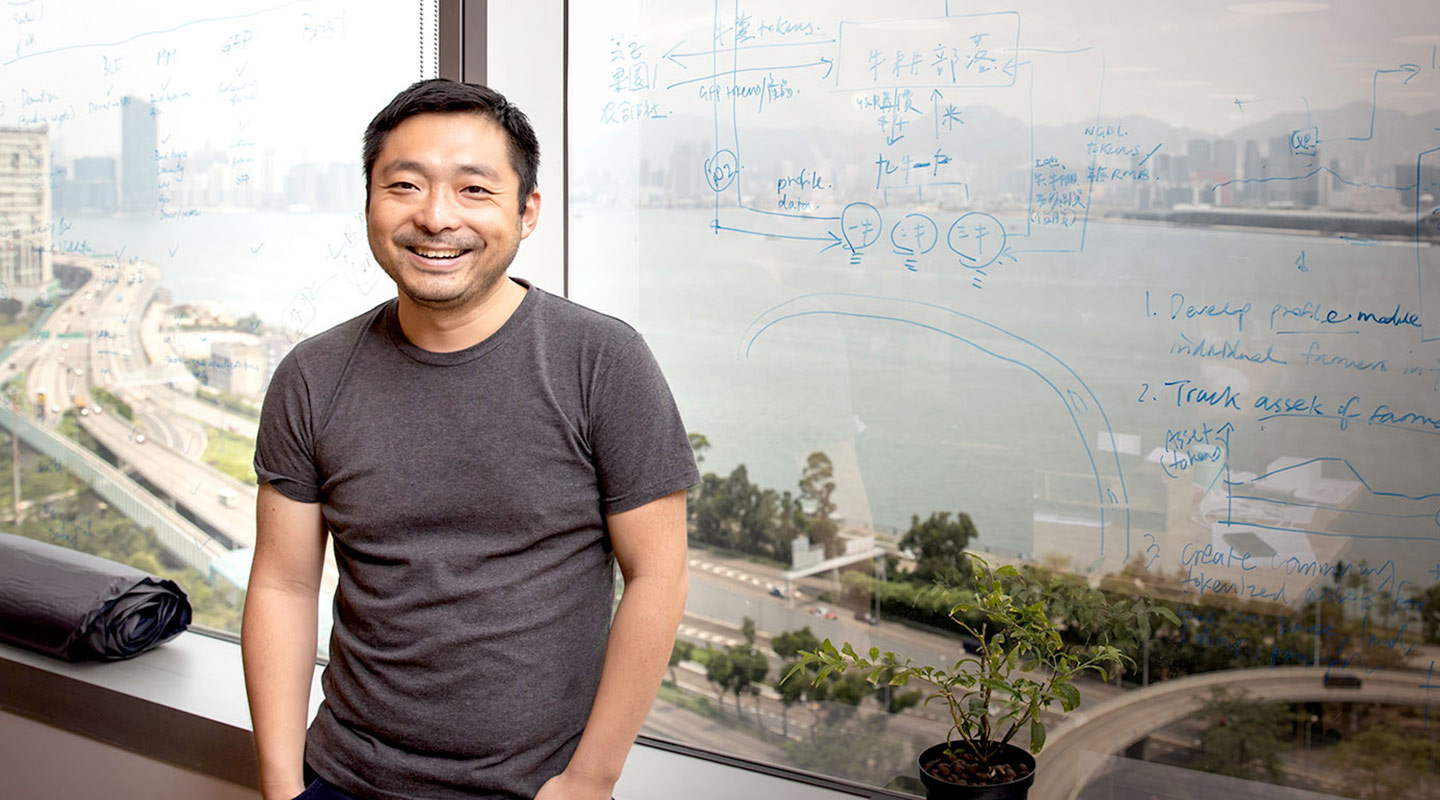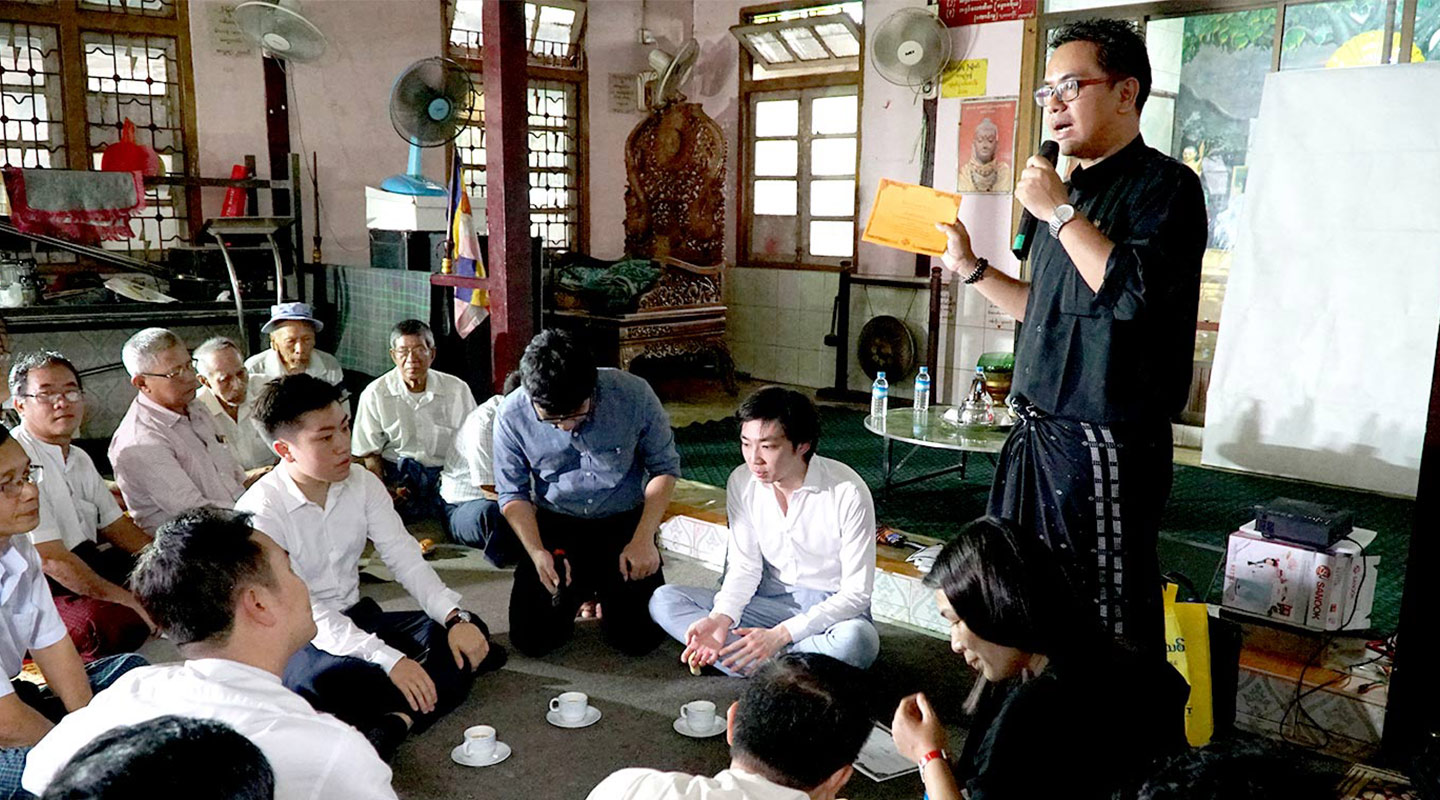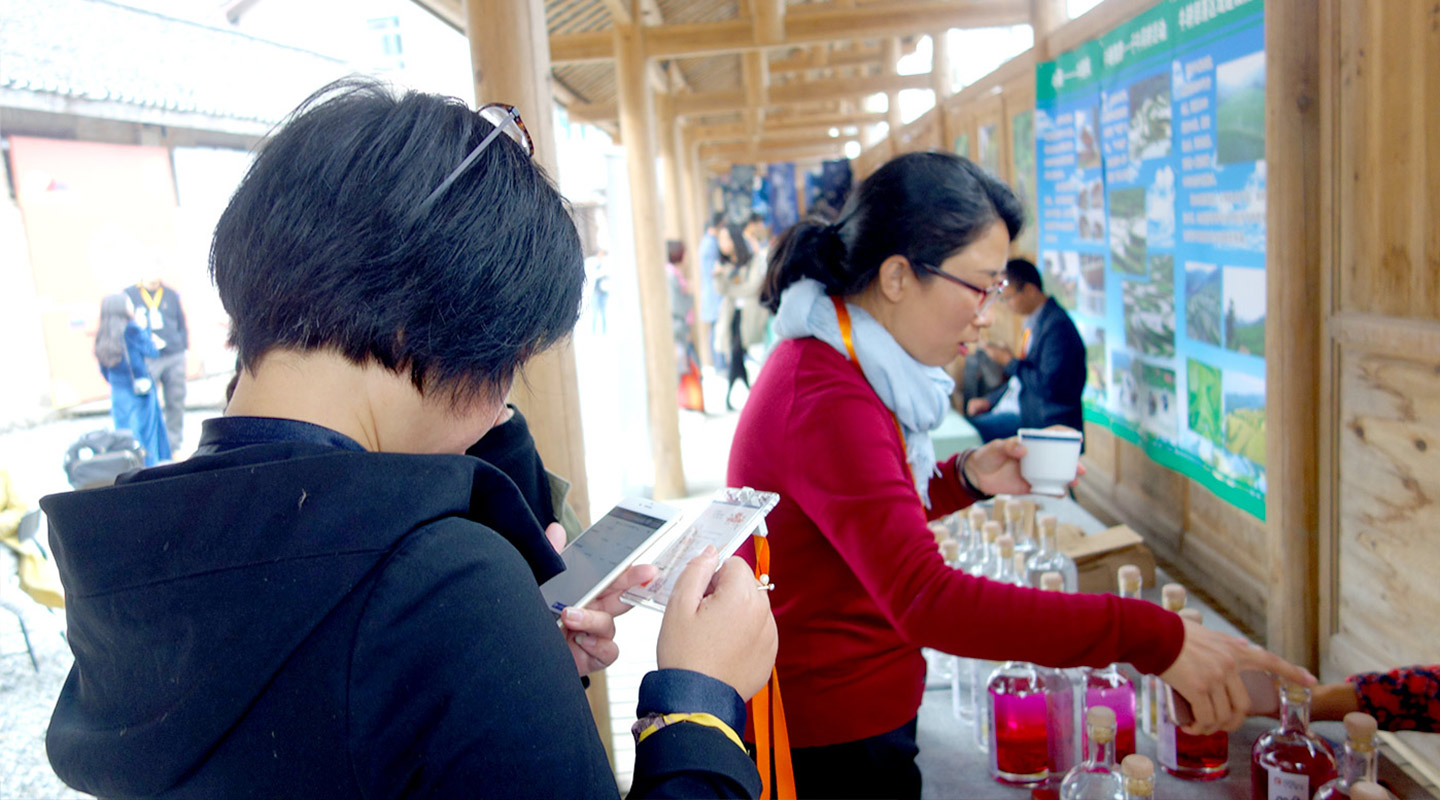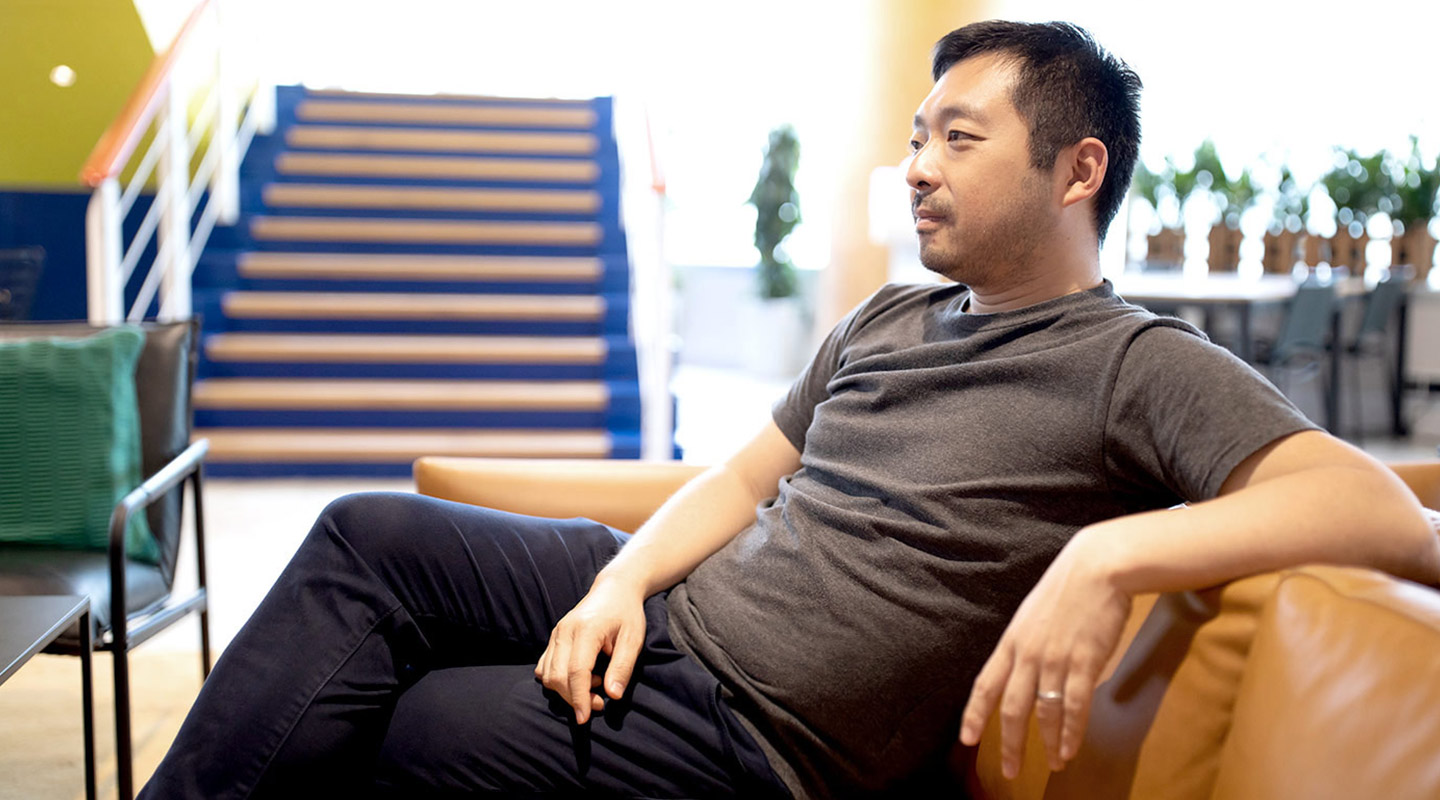Dear readers, With the launch of e-newsletter CUHK in Focus, CUHKUPDates has retired and this site will no longer be updated. To stay abreast of the University’s latest news, please go to https://focus.cuhk.edu.hk. Thank you.
Entrepreneur in the Rye
Tat Lam uses blockchain to lift villages out of poverty

Shanzhai, translated as ‘mountain village’, is a term often used pejoratively to refer to Chinese copycat products of mobile phones and handbags. Defying the negative perception, Tat Lam called the company he set up five years ago ‘Shanzhai City’. Describing his younger self as ‘a little rebellious’, he said the name was meant to be a manifesto against capitalism: ‘Whenever Apple launched a new smart phone, a vast number of fakes would surface at the shops of Huaqiang North Road in Shenzhen. These “knock-off” mobile phones actually cater to people’s needs at the grassroots level, providing the same convenience enjoyed by the affluent. What’s wrong with that?’
The visual on Shanzhai City’s website hints at the nature of the business. Against the backdrop of a lush tea forest and a taut power cable, a female farmer is seen wearing a straw hat and holding a smart phone while looking into the distance. Simply put, Shanzhai City is in the business of empowering disadvantaged groups from remote regions with technology.
Why is it not enough to help villages find investors and organize villagers for tea tree cultivation, if the purpose is to lift them out of poverty? And why is there a need to teach them to use a smartphone?
Tat explained: ‘Persuading investors to help with poverty relief doesn’t mean you should tearfully tell them about how poor and pathetic the villagers are. Every investor—whether individual, bank or government—would first think of the potential returns and look out for figures. For instance, for every dollar invested, the villagers would work 200 hours to plant 1,000 trees, alleviating the poverty problem by 0.2%. Gathering the data requires the farmers to be tech savvy so they can enter the figures and fill out questionnaires. In this way, the investment returns can be quantified.’
Tat sees his role as a bridge between poverty and capital. ‘Though I don’t think everything is quantifiable, you must know how to speak in numbers to talk with investors.’

The Shanzhai City team spends 80% of their time crisscrossing the globe to visit villages, providing communities in mainland China, Myanmar, Laos, Thailand, Papua New Guinea and Brazil with three types of training.
First, they teach farmers practical skills like effective methods of tree planting. Second, the team attempts to raise awareness of personal data privacy, because ‘the higher their privacy awareness is, the better the data quality they could provide.’ Third, the farmers are taught what constitutes ‘value’. ‘It’s a fallacy to think whoever owns the most cash owns the most value. Dollar notes are just a stash of papers. Only with the full circulation and transaction of their various products can they generate true value and form a community of mutual assistance and benefit.’
At the end of 2018, Shanzhai City took their third type of training to a higher level by incorporating it with blockchain technology. While the technology had yet to catch on even in the cities, it was introduced to the villages to facilitate a ‘cooperative economy’.
Blockchain is powered by encryption technology and can be seen as an advanced electronic ledger. Once recorded, a transaction becomes permanent and cannot be altered. Every record can be viewed by any participant, allowing everyone to verify the authenticity of each transaction. Therefore, blockchain can facilitate secure, reliable peer-to-peer transactions and remove the need for a middleman, such as a bank or government, to keep track of the financial deals.
Tat shows how a ‘cooperative economy’ works with an example. Person A runs a rice wine business and has announced his products are open for pre-order. To accrue wine ingredients, he pledges to buy rice from Person B, yeast from Person C and water from Person D. Interested customers can place a pre-order by transferring money to a temporary blockchain account. Upon payment, they will get a ‘wine token’. Thereafter, A begins to buy the ingredients to make rice wine with every transaction reflected on blockchain. After the wine is brewed, the customers verify the transaction details on blockchain. Then, customers transfer their tokens to the seller’s account and the wine is delivered to their doorstep.
‘This will give rise to a pre-sale system for farm products and a grand cooperative alliance. The central authority is removed but mutual supervision remains,’ Tat concluded.

The truly effective way to elevate farmers beyond poverty is to facilitate circulation of their products and services through blockchain technology. ‘I always tell people Hainan is one of China’s most impoverished provinces. Nobody believes me as they think this is not possible given its proliferation of luxury hotels. As a matter of fact, the locals earn only RMB2,000—3,000 each month. The real money makers are the hotels with their overseas bank accounts. Thanks to the tourism drive, foreign investors have gone there to make money from foreign visitors. But outside the walls of these hotels, a slum city prevails.’
Few would guess Tat studied architecture in university. Born in Beijing, he moved to Hong Kong for his primary education and later studied at CUHK’s School of Architecture. He admitted he lacks interest in designing buildings. Instead, what fascinates him is the relationship between architecture and cities. This is why, after graduating from university, he has been seeking the best development models for cities and villages around the world.
For business, he once circled the globe twice in a month and spent 270 days in a year travelling. Over the past five years he had called upon 300 villages. Though the work is tiring, what has sustained him and his team is the sense of accomplishment they experience. ‘This feeling doesn’t come from how great the changes we have brought to the world, but from being able to see the small steps we have made that move us closer and closer to our original goal—empowering rural areas to develop with legitimate business models and technologies. Hopefully, what we are doing will give shanzhai a better reputation.’

Reported by Christine N., ISO
Photos by Eric Sin